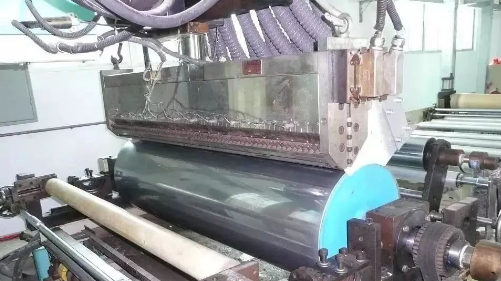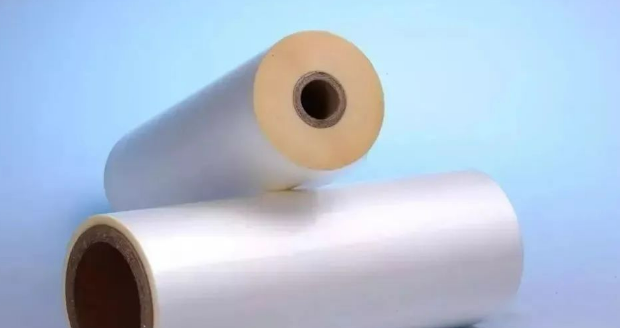Polypropylene
Polypropylene (PP) is a high-melting-point thermoplastic polymer with excellent comprehensive properties, making it one of the most promising thermoplastic polymers today. Compared to other common thermoplastic materials, it offers advantages such as low cost, light weight, superior mechanical properties including yield strength, tensile strength, and surface strength, exceptional stress-cracking resistance, and abrasion resistance, as well as good chemical stability, ease of molding, and a wide range of applications. It has been widely utilized in industries such as chemicals, electronics, automotive, construction, and packaging.

The packaging market has largely replaced paper with plastic films for soft packaging, from food to miscellaneous items. Plastic films used for soft packaging must meet requirements for protective, operational, convenient, and economical packaging materials, with suitable strength, barrier properties, stability, safety, transparency, and convenience.
CPP Film: CPP film comes in general-purpose, metallized, and boilable types. The general-purpose type is commonly used and can be adjusted within a certain range. The metallized type is a high-end product created through a special process using specialized polypropylene materials to achieve superior heat-sealing strength. The boilable type is designed for high heat resistance and is typically made from random copolymers with a higher initial heat-sealing temperature.
CPP film is a non-stretched, non-oriented flat extruded film made by the cast film method from unstretched polypropylene. It features light weight, high transparency, good flatness, good rigidity, high mechanical adaptability, excellent heat-sealing, moisture resistance, and heat resistance, good slip properties, high film production speed, uniform thickness, good moisture resistance, oil resistance, heat resistance, cold resistance, ease of heat sealing, and superior resistance to blocking. Its optical properties are excellent and suitable for automatic packaging.
Since its introduction in China in the 1980s, the investment and added value of CPP film have been significant. CPP film is widely used in packaging for food, pharmaceuticals, stationery, cosmetics, and textiles, with the largest usage in the food packaging sector. It is used for packing heat-sterilized foods, flavorings, soups, as well as for stationery products, photos, collectibles, various labels, and tapes.
BOPP Film: BOPP film can be categorized by function into antistatic film, anti-fog film, porous-filled modified BOPP film, and easy-to-print

BOPP film
BOPP film is a high-performance, highly transparent packaging material that was developed in the 1960s. It offers high stiffness, tear strength, impact resistance, good moisture barrier, high gloss, good transparency, good gas barrier properties, lightweight, non-toxic, no odor, good dimensional stability,wide applicability, good printability, and good electrical insulation properties. It is widely regarded as the “packaging queen” in the packaging industry.
Antistatic BOPP film is used for packaging small food items like sliced fish, easy-to-print BOPP film is used for packaging cereal products, and easy-to-cut BOPP film is used for packaging soups and medicines. BOPP shrink film, produced using the biaxially oriented film manufacturing process, is commonly used for cigarette packaging.
IPP Film: IPP film has slightly lower optical properties than CPP and BOPP, but it has a simple process, low cost, and can be easily sealed at the top and bottom for packaging. The film thickness generally ranges from 0.03 to 0.05mm. Using copolymer resins, it can produce films with excellent strength at low temperatures. Modified IPP films have low-temperature high impact resistance, high slip properties, high transparency, high impact strength, good flexibility, and antistatic properties. The film may include single-layer polypropylene film, which can be homopolymer or copolymer, or multi-layer co-extruded blown film using homopolymer and copolymer materials. IPP is mainly used for packaging fried snacks, bread, textiles, folders, record sleeves, seaweed, and sports shoes.
he production process of cast polypropylene film involves melting and plasticizing polypropylene resin through an extruder, then extruding it through a narrow slit die, followed by longitudinal stretching and cooling of the molten material on a casting roller, and finally undergoing pre-trimming, thickness measurement, slitting, surface corona treatment, and winding after trimming. The resulting film, known as CPP film, is nontoxic, lightweight, high-strength, transparent, glossy, heat-sealable, moisture-resistant, rigid, and uniformly thick. It has a wide range of applications, including as composite film substrates, boilable food and high-temperature packaging materials, and various packaging materials for foods, pharmaceuticals, clothing, textiles, and bedding.
Surface Treatment of Polypropylene Film
Corona Treatment: Surface treatment is essential for polymers to improve their surface wetting and adhesion in the printing and packaging industry. Techniques such as graft polymerization, corona discharge, and laser irradiation are used for surface treatment. Corona treatment is an environmentally friendly technology that increases the concentration of reactive oxygen radicals on the polymer surface. It is suitable for materials such as polyethylene, polypropylene, PVC, polycarbonates, fluoropolymers, and other copolymers. Corona treatment has a short treatment time, fast speed, simple operation, and easy control. It only affects the very shallow surface of the plastic, typically at the nanometer level, and does not significantly impact the mechanical properties of the products. It is widely used for surface modification of polyethylene and polypropylene films and fibers, as it is easy to apply and offers good treatment effects without environmental pollution
Surface Characteristics of Polypropylene Film: Polypropylene film is a nonpolar crystalline material, resulting in poor ink compatibility and reduced surface wettability due to the migration and buildup of low molecular weight substances like plasticizers, initiators, residual monomers, and degradation products, which form an amorphous layer that decreases the surface wetting performance, requiring treatment before printing to achieve satisfactory print quality. Additionally, the nonpolar nature of polypropylene plastic film presents challenges for secondary processing such as bonding, coating, lamination, aluminum plating, and hot stamping, resulting in suboptimal performance.
Principles and Microscopic Phenomena of Corona Treatment: Under the influence of a high-voltage electric field, the polypropylene film is impacted by a powerful electron flow, resulting in surface roughening. This is due to the oxidation process and molecular chain breakage products on the polypropylene film surface, leading to higher surface tension than the original film. Corona treatment creates a significant number of ozone plasma particles that interact directly or indirectly with the plastic film surface, leading to the cleavage of high molecular bonds on the surface and the generation of different radicals and unsaturated centers. These shallow surface radicals and unsaturated centers then react with water in the surface to form polar functional groups, activating the polypropylene film surface
In summary, the various types of polypropylene film and the wide range of applications, along with various surface treatment technologies, ensure that it meets the practical application requirements in packaging and other fields
Post time: Dec-19-2023






